Duong Lam Ancient Village
Description
Duong Lam Ancient Village is located approximately 50 kilometers northwest of Hanoi’s city. This community is ideal for individuals in search of a tranquil ambiance in the countryside. In Duong Lam, you will find the majority of the characteristics of a typical northern hamlet: banyan trees, water wells, communal yards, pagodas and temples, meandering village brick roads and small alleyways, laterite walls, and old wooden buildings. Despite considerable technology and urbanization, the town retains traditional values that are nostalgic and quiet.
Numerous residences in the town date back as far as 400 years, and the village’s history dates back around 1,200 years. A distinctive feature of the village is that the majority of its structures are composed of laterite and mud, two elements that are prevalent in the region. On house walls, gates, wells, temple walls, etc., laterite is utilized. The muck is collected from ponds. In addition to its historical and touristic significance, the old village of Duong Lam is an important location for the study of resident populations engaged in traditional agriculture. The village gate, banyan tree, well, and communal house all play a significant role in identifying Duong Lam as a historic village.
Two monarchs of Vietnam, Phung Hung (761-802) and Ngo Quyen (896-944), were born in Duong Lam, hence enhancing the village’s reputation. Both men fought resistance wars against northern invasion and were proclaimed kings after achieving national independence. Following their deaths, the local populace constructed temples in their honor.
- Duong Lam is a tourist destination, although locals continue to live there. Consequently, visitors must be kind and considerate. Before taking photos or portraits, you must obtain permission. And avoid entering private property without permission.
- Before being granted access to temples and pagodas, visitors must be appropriately attired. You must wear long pants and sleeved shirts; tank tops are not permitted (short & long sleeves are fine).
- Although English is rarely spoken in the village, the locals are extremely kind and polite. They are eager to welcome travelers into their homes for a cup of tea. However, for most it is a way to sustain themselves and pay for home maintenance, so a tip or donation is suggested.
When Is The Best Time To Visit Duong Lam Ancient Village
The ancient village of Duong Lam is accessible throughout the year. However, the best times for a vacation are during the holiday season and rice harvest.
Every year, the Duong Lam village festival season occurs in January of the lunar calendar. The traditional festival of the village of Mong Phu takes place from the fourth to the tenth and is regarded as the holiest celebration of the year.
The event of Thanh Hoang village is celebrated in the village’s oldest communal home with processions of the procession, offering pigs, and raising chicks… The villagers will then engage in folk games such as chess, chess, and fighting. Blindfolded hens attempting to catch ducks generate a festive and lively scene.
Six days later, the Dong Sang village festival was conducted, praying for a peaceful nation and a bountiful harvest with a variety of entertaining activities like lion dance, water procession, and sacrifice. The procession of dragons, unicorns, horses, banners, etc., from the common home to the Red River bank lasts nearly a day. Those who visit Duong Lam during this time will enjoy the joyful atmosphere and festival-only delicacies.
May and June of each year are when rice crops reach full maturity. Duong Lam welcomes the most tourists on the day of the harvest. The roads in Duong Lam are lined with paddy fields and dry straw, creating a picturesque, tranquil, and uncommon hamlet setting. Duong Lam is becoming a popular destination for tourists seeking authentic tours of North Vietnam in this village.
Architecture Of Duong Lam Ancient Village
The wooden house has five or seven spans and two wings. It has five rows of columns, but occasionally one row disappears. The mansion has become renowned for its intricately carved flowers, foliage, and clouds.
A system of wooden doors is quite firm. Each span contains four door leaves with upper and lower joints. Above 40 to 50 centimeters and below 10 centimeters from the floor, thresholds were constructed of sturdy wood. This gap aids in ventilation and prevents humidity on thresholds. The entire threshold system is the tie system connecting all spans together.
Duong Lam possesses 21 relic sites, including temples, pagodas, and tombs, of which ten have been designated as national and provincial relics. For intangible cultural relics, Duong Lam has conserved festivals, customs, and literature pertaining to the people and land of Duong Lam across time. Duong Lam’s biological environment is characterized by a number of magnificent sights associated with legends, such as Guom Hill, Ho Gam Hill, and the legends of Phuong Hung and Ngo Quyen.
Many local relics, including the Mia Pagoda, Phung Hung Temple, Ngo Quyen Temple, and Mong Phu common house, have been restored in recent years. Nonetheless, it is essential to maintain not just tangible cultural treasures but also intangible cultural relics and the ecological environment simultaneously.
The balance between ancient and contemporary cultural values, as well as the relationship between preservation and development, must be ensured throughout the construction of new cultural buildings whose purpose is to honor history, national heroes, and increase tourism activity. Preserving, repairing, and enhancing the value of the historic village of Duong Lam is crucial today because it helps to the preservation of the national cultural heritage.
Mong Phu village gate of Duong Lam Village
The 16th-century Mong Phu village gate is adjacent to a 300-year-old banyan tree, a big lotus pond, and a vast rice field. The Mong Phu gate, among the several entrances to the village, retains many ancient characteristics of old Vietnamese communities. It was created in the “Thuong Gia Ha Mon” style, which translates as “above is the house and lower is the gate.” Stepping through this gate reveals a narrow but clean brick-paved path leading to the center of the ancient village of Duong Lam in Hanoi, which has numerous relics.
The ancient houses
The village contains approximately 956 300- to 400-year-old residences that are worth a look. These wooden buildings are composed of laterite stones, bamboo, sapele, taipa, sawdust, terracotta brick, “mui ri” (mui ri is an ancient form of tile in Vietnam with a curved head) and frequently have 5 spans or 7 spans with 2 wings in addition to a yard, garden, kitchen, water well, main house, and barn.
Here are some of the most renowned residences you should see:
- Mr. Nguyen Van Hung’s Old House – the oldest in this region, with a gate constructed from a mixture of earth, rock, rice husk, and musk.
- Mrs. Duong Thi Lan’s Old House – erected 238 years old.
- Mr. Ha Nguyen Huyen’s Old House – attracts tourists with its green trees and brick-paved yard, which is where the famous soybean sauce is made. Due to the house’s distinctive architecture, it is always cool in the summer and warm in the winter.
Numerous families in the town provide tourism services such as lodging, bicycle rental, agricultural tours, and meals…
Mong Phu communal house
The Mong Phu communal house, constructed in the 18th century and encompassing an area of 1,800 square meters, is the site of worship for Tan Vien. On exceptional occasions, residents of Duong Lam Village congregate in the expansive yard in front of the common house. Two old wells on either side of the Mong Phu communal house resemble the eyes of a dragon when viewed from above.
Nghi Mon gate (main gate) of the communal home consists of four pillars: two larger pillars and two smaller pillars built of bricks with the pictures of the Four Holy Beasts imprinted on the highest point (dragon – unicorn – tortoise – phoenix).
Ta Mac hall and Huu Mac hall, each with 5 tiny spans, are situated on opposite sides of the courtyard. The major hall is Dai Dinh, which was constructed in the manner of “3 gian 2 chái” – a classic Vietnamese architectural style consisting of three main spans and two sub-spans on each side. Every corner of Dai Dinh hall is intricately sculpted with dragons, fish, birds, and flowers. Every hall in the communal home of Mong Phu has a curved roof covered with dark red tiles.
Ngo Quyen temple
King Ngo Quyen is renowned for his historic victory at Bach Dang in 938, which ended one thousand years of Chinese feudal control and inaugurated a new period of Vietnamese independence and self-reliance.
The Ngo Quyen temple and tomb complex is around 500 meters from the King Phung Hung Temple. It was constructed on a high slope known as Cam Hill. The temple was constructed on the summit of the hill, approximately 100 meters from the mausoleum. There is a big field between the two hills in front of the tomb. According to folklore, the young Ngo Quyen fed buffaloes and performed martial arts on this ground frequently with his pals.
Ngo Quyen Temple was constructed in 1874 and has undergone numerous restorations. The most recent refurbishment occurred under the reign of King Tu Duc (1848 – 1883). The tomb of King Ngo Quyen was constructed in the 27th year of the reign of Tu Duc (1874).
The temple consists of the main entrance, the left curtain, the right curtain, the front chamber, and the back chamber. Currently, the main hall is utilized to display Ngo Quyen’s triumph at Bach Dang River. The back chamber is divided into three sections, and the wooden frame is adorned with dragon, flower, and leaf carvings, among others. The statue of Ngo Quyen is positioned in the center.
Phung Hung Temple
In the year 791, Phung Hung rallied the populace and declared war on the An Nam Colonial Office. His people expressed profound gratitude and hailed him as “The Great Father and Chieftain” after his passing. The Phung Hung King Shrine is situated on a modest hill to the west of the Cam Lam village. The shrine’s front yard is flanked by two side buildings. The front worship hall is located in the center, followed by the rear worship hall. The front worship hall is dedicated to high-ranking Phung Hung officials, while the back worship hall is dedicated to Phung Hung King. The main worship hall was constructed in 1882. In the past, bricks were used to pave the floor’s center. The altar in the center was used to worship the highest-ranking mandarins, the altar on the left was dedicated to the deity of the village that organized the festival, and the altar on the right was dedicated to the deities of the other villages. Also assumed to have been constructed in the later half of the 19th century is the rear worship hall. This building’s structure and decor feature numerous antique characteristics.
Mia pagoda
Mia Pagoda is a destination that visitors to Duong Lam should not miss. It dates back to at least the 15th century and is one of the ten oldest temples in Vietnam. The ancient pagoda, known as Sung Nghiem Tu, was abandoned in the 17th century and repaired in 1632 by Tring Trang’s wife. Locals referred to her as Lady Queen Mia, and the pagoda was named after her. Mia Pagoda contains a vast collection of 287 Buddhist statues, consisting of 6 bronze statues, 107 wooden statues, and 174 ceramic statues. Its building style adhered to the Vietnamese notion of “Internal attack with outer support” (Ni Công Ngoi Quc) – a typical architectural style for pagodas and temples in Vietnam.
How To Get To Duong Lam Ancient Village
Duong Lam, a historic Vietnamese village, is situated in Duong Lam commune, Son Tay town, the capital city of Hanoi – 45 kilometers west of the Hanoi city center. This village includes of nine hamlets, the most culturally and architecturally significant of which are Mong Phu, Dong Sang, Cam Thinh, Doai Giap, and Cam Lam.
If you arrive at the hamlet by motorbike, you can park at the Mong Phu village gate and explore on foot or rent a bike (80,000 – 100,000 VND/day; $3.5 – $4.4) to get around.
The entrance cost per person is 20,000 Vietnamese Dong ($0.87). The ticket office is placed adjacent to the village entrance of Mong Phu. Don’t forget to request a travel map from the ticket vendor.
By bus
From Hanoi, there are three bus routes to the historic village of Duong Lam: The fare for bus number 71 from the My Dinh bus station to the Son Tay bus station is 20,000 VND. Route 73 from My Dinh bus station to Thay Pagoda costs 10,000 VND per person. Likewise, route 89 from Yen Nghia bus station to Son Tay bus station costs 9,000 VND per ticket. The old village of Duong Lam can be reached either motorbike taxi or cab from the Son Tay bus station.
By motorbike or car
Duong Lam is easily accessible by motorbike or vehicle from Hanoi. There are two routes for your consideration: Take Thang Long Boulevard, turn right at the Hoa Lac T-intersection, and then take Route 21 via Son Loc to the intersection with Route 32, where you will see a signage for Duong Lam. Take route 32 to the town of Son Tay; at the intersection with road 21, turn left to reach the village.
Gallery / Photos
Working Hours
- Monday Open all day
- Tuesday Open all day
- Wednesday Open all day
- Thursday Open all day
- Friday Open all day
- Saturday Open all day
- Sunday Open all day
Location / Contacts
- Address : Đường Lâm, Sơn Tây, Hanoi, Vietnam

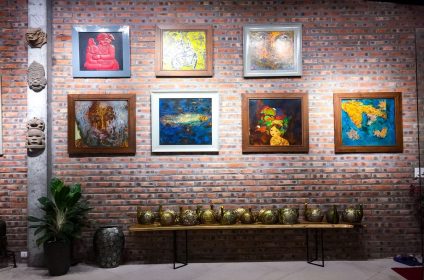
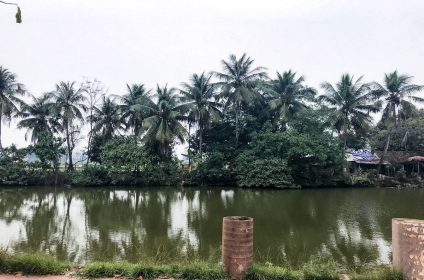
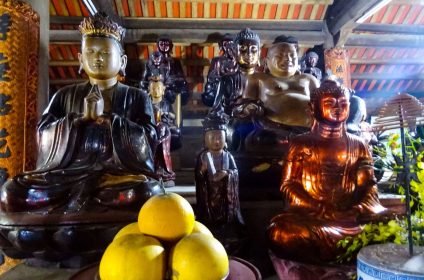
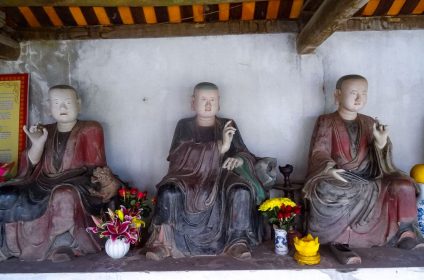
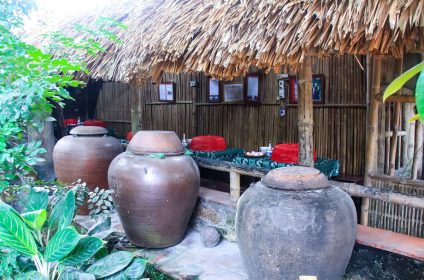
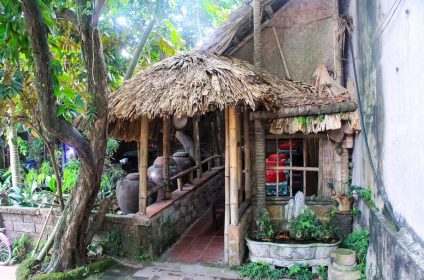
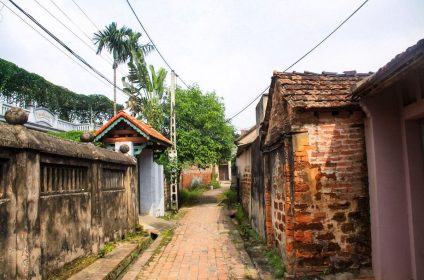
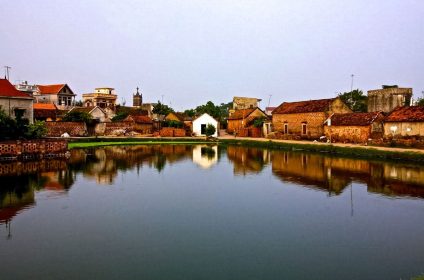
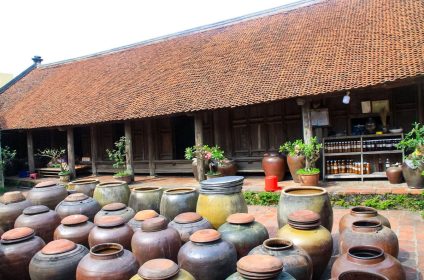
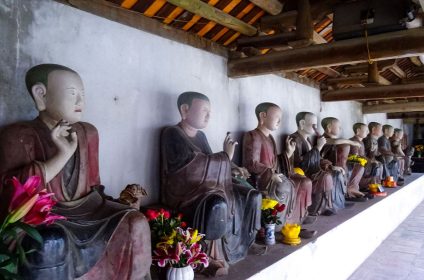
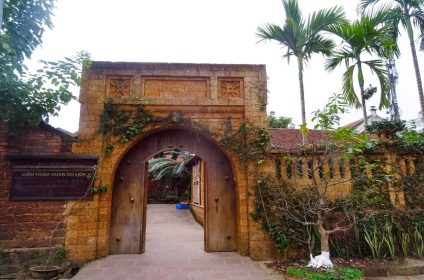
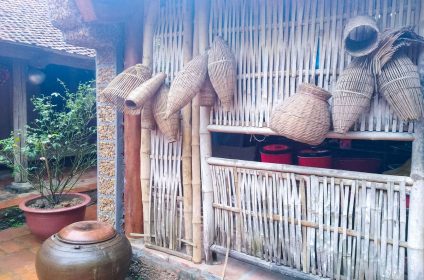
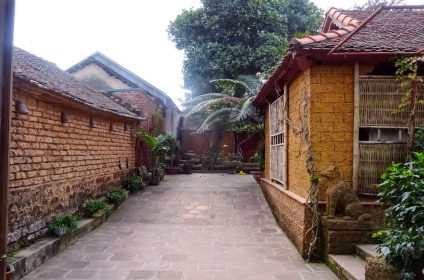
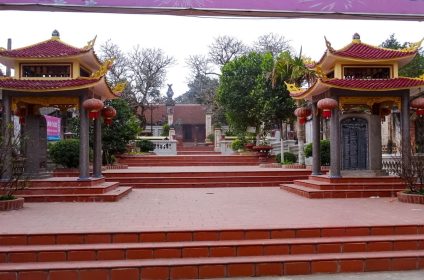
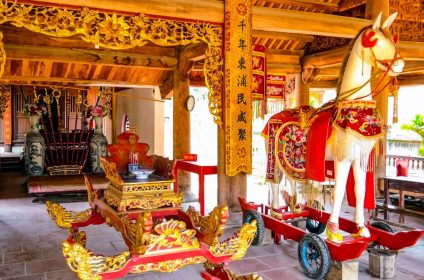
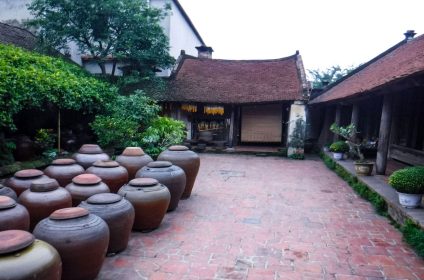
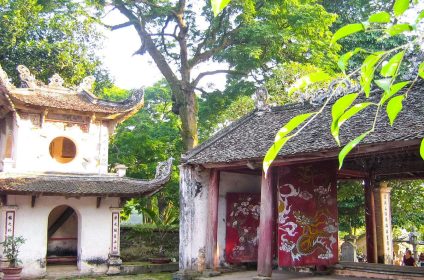
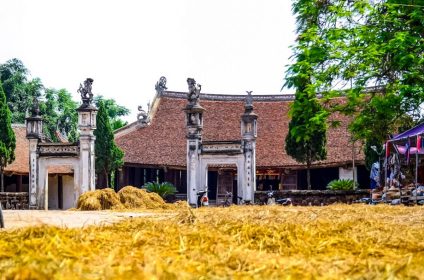
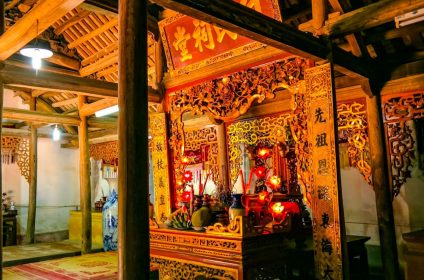
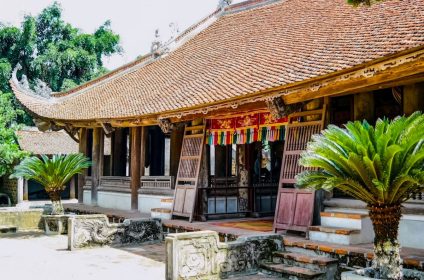

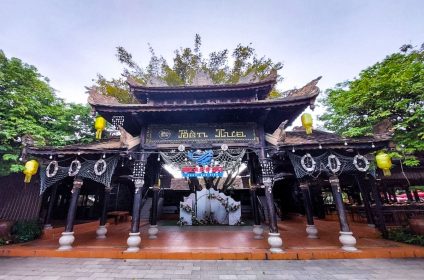

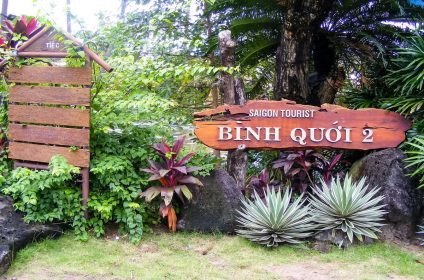

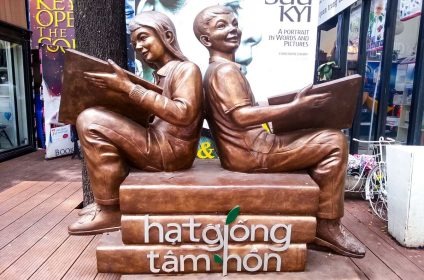










Add Review